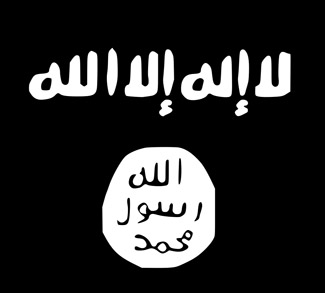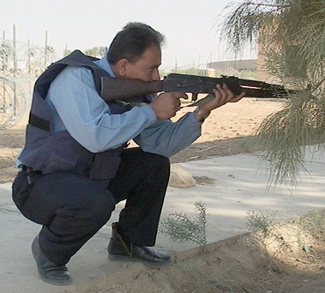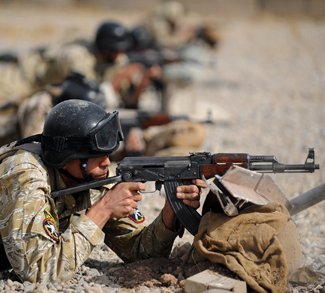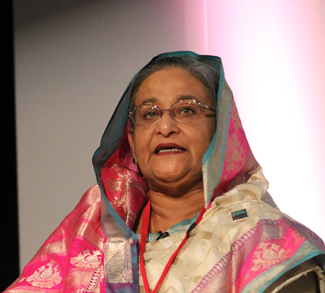Islamic State, in its latest issue of Dabiq entitled “Just Terror,” has sounded the clarion for its jihadi campaign in Bangladesh with a dedicated article entitled “The Revival of Jihad in Bengal.” This is the first official instance of the Islamic State trying to revive jihad in the Indian subcontinent, concomitantly confirming the presence of Islamic State in Bangladesh, and posing serious security problems to India.
The Dabiq article has been authored by Abu Abdur Rahman Al Banghali, ostensibly a Bangladeshi himself, identified by the nom de guerre suffix Banghali, which refers to a person of Bengali origin. The use of word “Bengal” in the Dabiq article is explained by an annotation stating that “Bengal is what the region was referred to before the founding of “Bangladesh” by nationalists in 1971.” This reference is to the 1971 liberation war for an independent Bangladesh from Pakistan. The article has criticized even the Islamist political parties and extremist groups with hardline ideology in Bangladesh for non-conformity to the puritan form of Islam as propagated by the Islamic State. The article not only targets new recruits but also members of other organizations in Bangladesh to switch allegiance to the Islamic State.
Interestingly, terror operations in Bengal have been included only in the current issue of Dabiq under a section titled “Military Operations by the Islamic State.” This section is a regular feature in all its issues of Dabiq, where the military operations of Islamic State in its “Wilayats” (provinces) are published.
The magazine has also officially claimed responsibility for the targeted killing of foreigners, policemen, and bomb attacks on a Shia procession in Bangladesh this year. The Dabiq article claims that Islamic State’s security cell carried out the following attacks:
September 28 – assassination of Cesare Tavella, an Italian citizen.
October 03 – assassination of Kunio Hoshi, a Japanese citizen in the city of Rangpur.
October 24 – multiple IED attacks on a Shia procession in the city of Dhaka, killing one person and wounding eighty-seven.
November 04 – assault on a police checkpoint in Dhaka, killing one policeman and wounding another
The Dabiq article has put an end to the ambiguity prevailing over the actual perpetrators of recent “lone wolf” type attacks in Bangladesh. Though these attacks were attributed to the Islamic State by the SITE Intelligence Group, Dhaka had maintained that the attacks were artificially engineered by vested interests, and the government has vehemently denied the presence of the Islamic State in Bangladesh. However, recent reports indicate that Dhaka has reconciled to the presence of Islamic State in Bangladesh by seeking assistance to nab two fugitive Islamic State operatives hiding in India who are suspected of being behind terror attacks in Bangladesh.
Security Implications for India
Given this new development and India’s close physical proximity to Bangladesh, Indian security planners will be concerned as this is bound to have serious security implications for India for a variety of reasons.
Firstly, Bangladeshi extremists have been known to operate from India, particularly in West Bengal. A module of Jamaat-ul-Mujahideen (JMB), a banned extremist group in Bangladesh, was busted in Burdwan, West Bengal, in 2014. An investigation by India’s National Investigation Agency (NIA) has revealed that JMB has spread its network in the Indian states of West Bengal, Assam, and Jharkhand. JMB has been involved in recruitment, radicalization, and training of Indian youths by organizing terrorist training camps in certain Madrasas. JMB has established organizational bases at certain districts of West Bengal like Nadia, Burdwan, Murshidabad and Birbhum as well as in the Sahebganj district of Jharkhand in India. NIA charge sheets reveals that these bases were actively used for organizing radicalization programs, organizational meetings, fund-collection meetings, and hideouts for cadres and their families. JMB has an elaborate network of terrorist training camps at select Madrasas, and other hideouts where recruits are indoctrinated into the violent jihadi ideology as well as training for violent action through use of explosives and firearms.
More recently, Dhaka handed over a list of 204 Bangladeshi terrorists who are hiding in different parts of India. Interestingly, Dhaka has also provided the details of two Islamic State operatives believed to presently be in India, both of whom were involved in the assassination of the Japanese national in Dhaka in October 2015. As a result, there is always a healthy pool of terrorists or indoctrinated cadres belonging to different Bangladesh extremist groups or organisations in India, any of whom could possibly switch allegiance to Islamic State with a flick of a switch, providing Islamic State with readily available resource, and posing serious threat within India.
Secondly, the Indo-Bangladeshi border is highly porous which has abetted the rapid growth of smuggling networks and easy movement of criminals across the borders. For instance, fake Indian currency notes (FICN) are smuggled by agents at the behest of Pakistan’s Inter-Services Intelligence (ISI) into India through Malda in West Bengal. The National Investigation Agency of India is presently investigating cases related to seizure of huge consignments of FICNs (Rs.2.71 Crores) stashed in shipping containers in Dhaka. In reality, Bangladesh has emerged as a key hub for peddling FICNs into India, which are sourced from Dubai. This network is robust, efficient and intact in-spite of joint working mechanisms formulated to tackle this menace by both the countries. This network has been used by terrorist groups in the past to move terrorists and logistics in and out of India.
Thirdly, terrorists and insurgents from both India and Bangladesh have found safe haven at both sides of the border. For instance, some of the Indian insurgent leaders like Arabinda Rajkhowa, and Anup Chetia of the banned United Liberation Front of Assam (ULFA) have found shelter in Bangladesh in past. Fundamentalists like Thadiyanvide Nazir of the Lashkar-e-Taiba module which carried out the bomb blasts in Bangalore, India in 2008 have also found their way to Bangladesh. Dhaka has arrested these insurgents and terrorists who were handed over to the Indian authorities. Notwithstanding this crackdown, Bangladesh still appears to figure in the itinerary of most of the terrorist groups in India, for both infiltration as well as exfiltration of terrorists using the above networks.
Fourthly, the ability of the Islamic State to mount rapid, frequent attacks with a shortened planning and execution cycle could also play in its favour. For instance, Russia and France started their air campaign against the Islamic State in late September, 2015. Islamic State, in response to their bombing campaign, brought down a Russian civilian jet over Sinai with a bomb and conducted terror attacks in Paris in October and November respectively. Islamic State should have theoretically conceived and planned the attack only after the start of the air campaign. Hence, commissioning, planning, and execution of these complex trans-border terror attacks took anywhere between 30-45 days, which is the key strength of the Islamic State, not rivaled by any other terrorist group. Similar complex attacks by other terrorists groups have used up more time to plan and execute compared to these attacks. For instance, Al Qaeda took more than a year to plan and execute 9/11 attacks in 2001, so did Lashkar-e-Toiba for Mumbai in 2008.The ability of the Islamic State to strike at will at distant lands, at short notice is its unique selling proposition which will make more radicalized youngsters gravitate towards the Islamic State. This ability is more pronounced after its recent conventional losses in Syria due to the coalition air campaign.
There are already ominous signs of Islamic State attempting to harness the above aspects in its favor. Islamic State recently released a recruitment audio message in Bengali, the dialect spoken by a size able population of Bengalis in India’s West Bengal. This is a clear attempt to target the Bengali-speaking population in India and Bangladesh. In addition to that, Indian intelligence agencies have intercepted several youngsters going to Syria to join the Islamic State. Most of these wannabe jihadis had planned to cross over to Bangladesh illegally and travel to Dubai and to Turkey from there, which is a testimony to the fact that the Islamic State handlers are still using Bangladesh as an exfiltration route. This is a strong testament to the presence of a support network in Bangladesh. Hence, an active jihadi support apparatus in Bangladesh will only exacerbate the situation further for India.
A readily available pool of recruits in India, supported by a well-knit support network in Bangladesh, has effectively created a scenario which could bring Islamic State to India’s doorsteps. Islamic State has resources which has facilitated the commissioning of multiple terror attacks in Bangladesh with rapid frequency, including the recent attack on a Shia mosque as recent as November 24th, killing one person. Islamic State could possibly use these resources to enhance its ability to execute terror attacks with a reduced attack cycle, more frequently in India. As reported by Geopoliticalmonitor recently, these resources could well play a key role in translating the intent of the Islamic State into actions, which has already envisioned unleashing the apocalyptic “Ghazva-e-Hind” in India.




